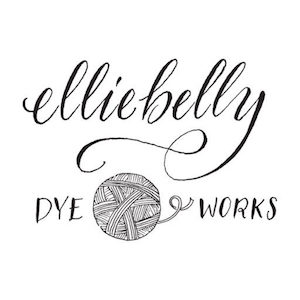Do you ever end up with yarn in your stash that you love in a color that isn't right for you? Years ago, and I do mean years, I purchased some Debbie Bliss Pure. It's lovely yarn — aran weight cashmere in 25 gram/49 yard put ups. The yarn is now discontinued, but I'd like to knit with it for winter. I had two and one-half skeins of a blue leftover from this cowl.
I love the color, but didn't want to knit with it again. And, I also had 10 skeins of a pink that was a bit too bluish for what I wanted.
This yarn is a dream to knit with – no idea why it was discontinued. One of my favorite projects of all time, my Orchids & Fairly Lights hat from Little Owl Knits is knit from it, using some natural colored skeins.
So, I decided this afternoon that it was time to overdye these skeins and find a fall knitting purpose for them. A couple of easy steps will guarantee a good over-dyeing result, whether you are an experienced knitter or not. Here's my overview:
- Make sure your skeins are clean and the fiber is "open" to absorb dye evenly. There are two steps here. First, remove any ties on the skein that might be tight enough to act as a resist and keep dye from evenly covering your yarn. I removed a wrap around the skein that was tied too tightly and replaced it with a very loose figure 8 wrap that wouldn't get in the way of the dye. Second, soak your yarn at least one hour although overnight is better; especially for something like cashmere that is slow to absorb water. I added in a little squirt of Synthrapol, a gentle low suds soap that doesn't promote felting, but you could just as easily use a gentle dishwashing liquid. This insures that anything that got on the yarn in the finishing process or any dust or dirt that may have found its way onto your fiber doesn't get in the way of even dye absorption.
- Prepare your dye. I use acid dyes. They are easy to use and you can find directions as well as supplies at websites like www.dharmatrading.com, but there are lots of internet tutorials and people seem to have lots of success with food coloring, kool aid, and other food quality dyes. Just remember if you use acid dyes, any pots, spoons, etc., that you use in the process can't be used for food any longer. Also, take care to mix your dyes in a well-ventilated area while wearing a mask.
What's the best process to use for overdyeing? There are lots of good choices. First, think about color. Your dark blue skein is never going to be pale pink. And the color you start out with will influence the color you end up with. Keep that in mind and work with the color you start with, and not against it. For instance, a shocking chartreuse overdyed a deep brown will end up a woodsy brown green that you will be delighted to knit fall socks from. Yes, the basic blue plus red equals purple does come into play, but it's a lot more about tone and subtle color movement. Here, I used a deep brown over my turquoise. If I had just dipped the yarn in and then remove and steamed it, I would have ended up with a pretty copper patina blue-green. But, wanting a deep dark brown, I filled a dye pot with a quantity of the brown dye, immersed it, and steamed on the stove top for an hour to end up with a deep brown. My pink yarn has a blue undercast. So I settled on a medium blue-gray as my goal. All of the blue tones will come from the yarn I started with, so I mixed a true black, diluted it, and again steamed the yarn in a pot to get dark, even color. The options I've mentioned in the course of discussing colors are two of the easiest ways for a home dyer to overdye yarn. You can dip the yarn into the dye you've prepared, leaving it to soak until it's the shade you want (but beware it will dry a bit lighter than it appears while immersed) and then steam it (I like to use a dedicated bamboo vegetable steamer for this) or steam it, fully immersed in dye solution, in a dye pot (stainless steel is the best and Amazon has some relatively inexpensive ones, but canning pots found for under a dollar at yard sales are great for the home dyer). Other possibilities involve the use of a microwave, but here again, it's best to have a microwave used exclusively for dyeing, making this a less than efficient solution for the casual over-dyer.
The best part of this is that if you don't like where you end up, you can overdye the yarn again, once you understand how the color you started with and your end goal are playing together. And, of course, if you don't want a semi-solid or solid yarn, you can take steps to maintain some of the original color for a variegated or even a speckled yarn.
That's all there is to it! Allow your yarn to cool, carefully rinse it in room temperature water until it runs clears, and dry it.
My results? The yarn is still gently cooling in the pot. In summer, I hang my yarn from the branches of my bay tree until it's dry, so hopefully, I'll be able to share photos with you tomorrow. Here is the blue yarn's progress from turquoise to brown, simmering gently in the pot.
